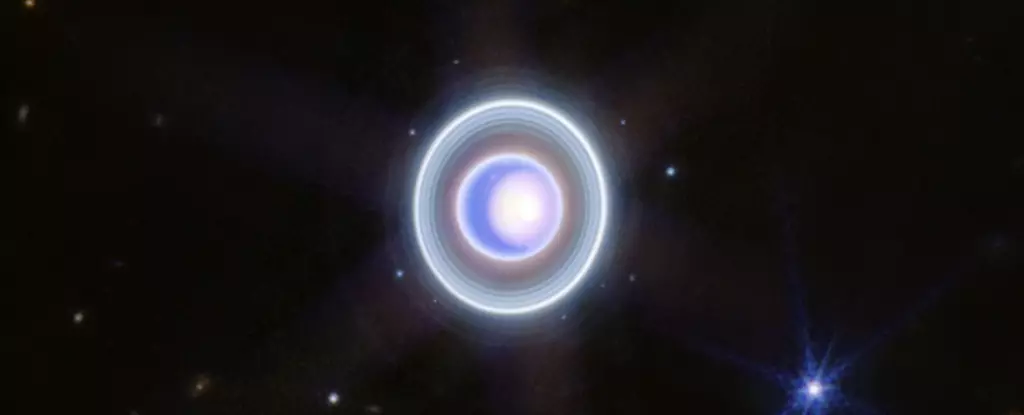Uranus, often overshadowed by its more prominent planetary siblings, has puzzled astronomers with its unique characteristics for decades. From its peculiar rotation to its unusual magnetic field, this distant giant continues to challenge our understanding of planetary science. Recently, a study led by NASA’s Jamie Jasinski has called into question the existing narratives about Uranus’s magnetosphere, suggesting that prior observations might have been misinterpreted due to transient solar activities.
The magnetic field of Uranus has long been regarded as one of the most enigmatic features in our Solar System. Historically, data from the Voyager 2 spacecraft during its 1986 flyby indicated that Uranus exhibited a magnetosphere that was both tilted and offset from its rotational axis. These findings painted a picture of a planet with a complicated and unstable magnetic environment. However, the recent analysis by Jasinski and his team introduces an alternative interpretation, positing that the peculiarities observed may not reflect the planet’s typical state.
According to Jasinski, the Voyager 2 mission encountered Uranus during a period of heightened solar activity, leading to observations that were less representative of the planet’s usual conditions. This misalignment in timing has prompted a reevaluation of how scientists interpret the data obtained during that historic flyby.
Central to this reevaluation is the role of the solar wind—streams of charged particles emitted by the Sun. During the critical moments leading up to Voyager 2’s flyby, solar wind pressure surged, dramatically compressing Uranus’s magnetosphere. This compression limited its volume to roughly 20% of what it would typically be, creating a dynamic environment that is rarely observed. Jasinski’s investigation revealed that this unique solar wind activity lasted for only a brief window, likely skewing the observations made by Voyager 2.
These findings underscore a crucial principle in astrobiology: planetary observations are inherently affected by external magnetic and thermal dynamics at any given time. This concept had previously been highlighted during studies of Mercury by the MESSENGER mission, indicating that similar anomalies could skew perceptions of other celestial bodies.
The implications of Jasinski’s research extend far beyond mere observations; they challenge the foundational ideas of how Uranus’s internal structure may function. Prior to this study, scientists tended to theorize that the unique magnetic characteristics arose from an unusual interior dynamic. However, if Uranus’s magnetosphere can be so heavily influenced by transient solar activities, it suggests that the planet’s magnetic properties may resemble those of other gas giants more closely than previously thought.
This revelation compels astronomers to consider the dynamic nature of Uranus and its magnetosphere. In light of this new data, it is evident that understanding this planet can no longer rely solely on a singular, isolated set of measurements from a brief flyby. Instead, a more comprehensive investigation, potentially through a dedicated mission, might yield critical insights into both Uranus and its companion moons.
Jasinski’s findings underscore the urgent need for renewed space missions focused on the outer planets, particularly Uranus and Neptune. Such missions could provide the necessary context and data to either confirm or challenge this recent analysis. The potential presence of hidden water reservoirs or volcanic activities on Uranus’s moons could have been obscured in the chaotic magnetospheric environment encountered by Voyager 2.
As Jasinski articulated, had the spacecraft arrived just a week earlier, it may have recorded a much different picture of Uranus’s magnetosphere and its moons, revealing a more stable and less chaotic environment. This could fundamentally reshape our understanding of not only Uranus itself but also how gas giants interact with their environments and solar winds.
Understanding Uranus and its magnetic peculiarities is no minor feat. The revelations brought forth by the recent analysis prompt a critical look at how we gather and interpret data from distant worlds. They emphasize the necessity of ongoing exploration and the value of considering temporal atmospheric conditions when interpreting planetary behavior. As we strive to uncover the mysteries of Uranus, one thing becomes clear: the quest for knowledge about our Solar System’s outer reaches is only just beginning. Moving forward, with dedicated missions and continued research, we may finally demystify this vibrant planet and its intriguing magnetic landscape.


Leave a Reply